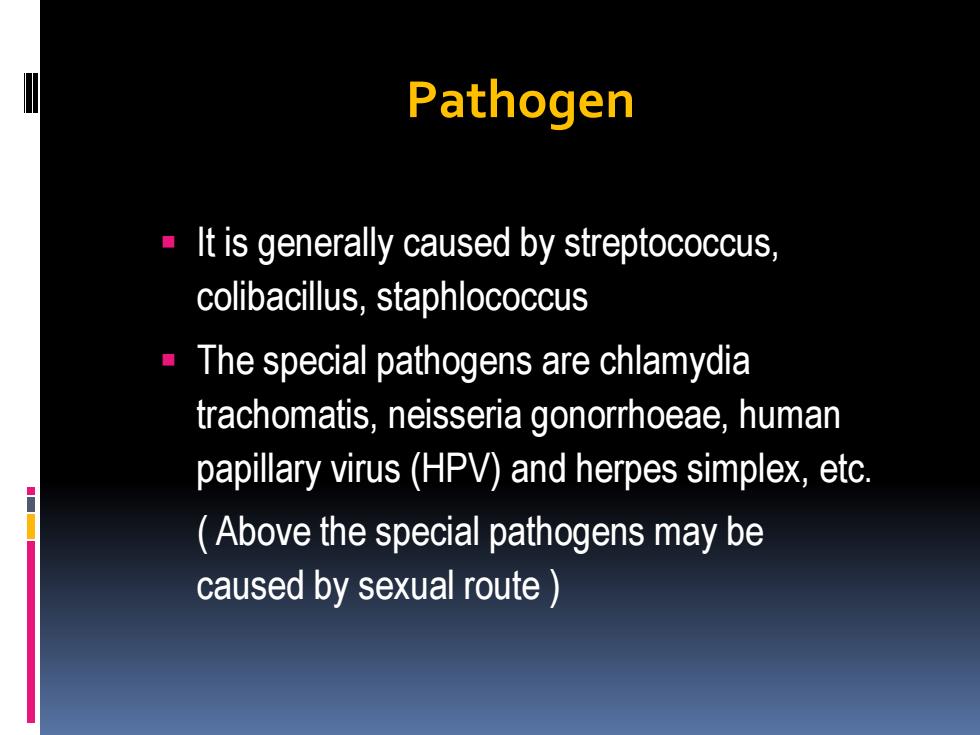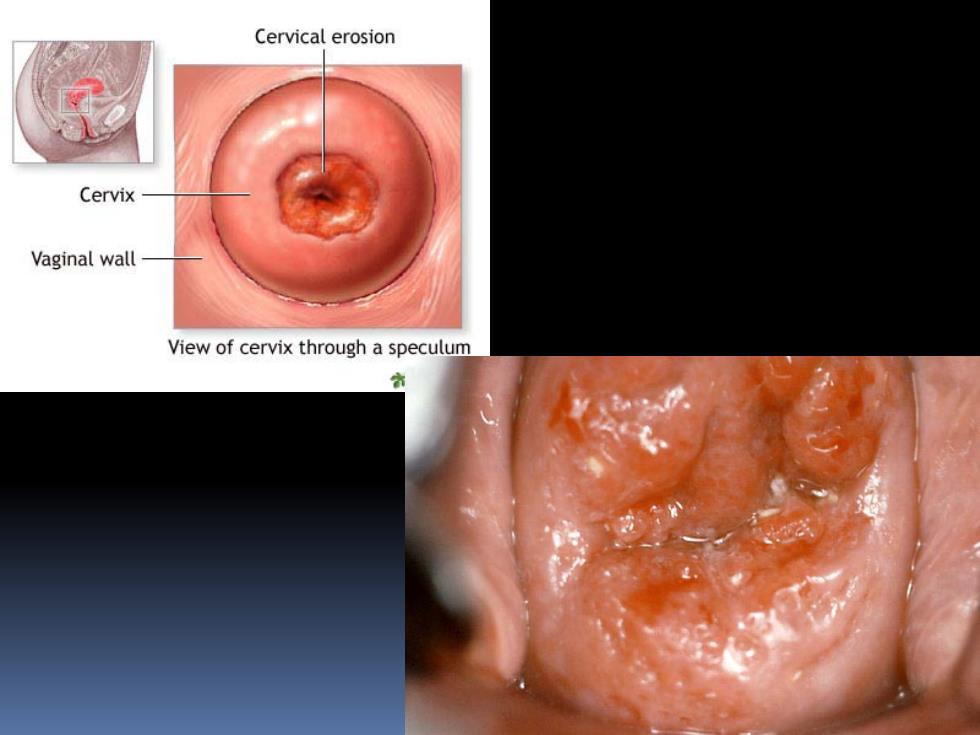
Pathogen It is generally caused by streptococcus, colibacillus,staphlococcus The special pathogens are chlamydia trachomatis,neisseria gonorrhoeae,human papillary virus (HPV)and herpes simplex,etc. Above the special pathogens may be caused by sexual route
Pathogen It is generally caused by streptococcus, colibacillus, staphlococcus The special pathogens are chlamydia trachomatis, neisseria gonorrhoeae, human papillary virus (HPV) and herpes simplex, etc. ( Above the special pathogens may be caused by sexual route )

Pathological Changes According to clinical and pathologic features,chronic cervicitis is divided into three types
Pathological Changes According to clinical and pathologic features, chronic cervicitis is divided into three types

1.Cervical Erosion Generally it is pseudo erosion:The covering squamous epithelium is almost always replaced by the columnar epithelium of the endocervix. Less commonly it also is actual erosion Squamous cell metaplasia of columnar epithelium and gland. The stroma is infiltrated by lymphocyte and plasma cells
1. Cervical Erosion Generally it is pseudo erosion: The covering squamous epithelium is almost always replaced by the columnar epithelium of the endocervix. Less commonly it also is actual erosion Squamous cell metaplasia of columnar epithelium and gland. The stroma is infiltrated by lymphocyte and plasma cells

Cervical erosion Cervix Vaginal wall View of cervix through a speculum 含

2.Nabothian Cyst 0.1-0.5cm in diameter Over secretion of mucus and poor drainage of mucus,then cyst formation 3.Cervical Polyp Formed by proliferation and protrusing of the endocervical tissue
2. Nabothian Cyst 0.1-0.5cm in diameter Over secretion of mucus and poor drainage of mucus, then cyst formation 3. Cervical Polyp Formed by proliferation and protrusing of the endocervical tissue